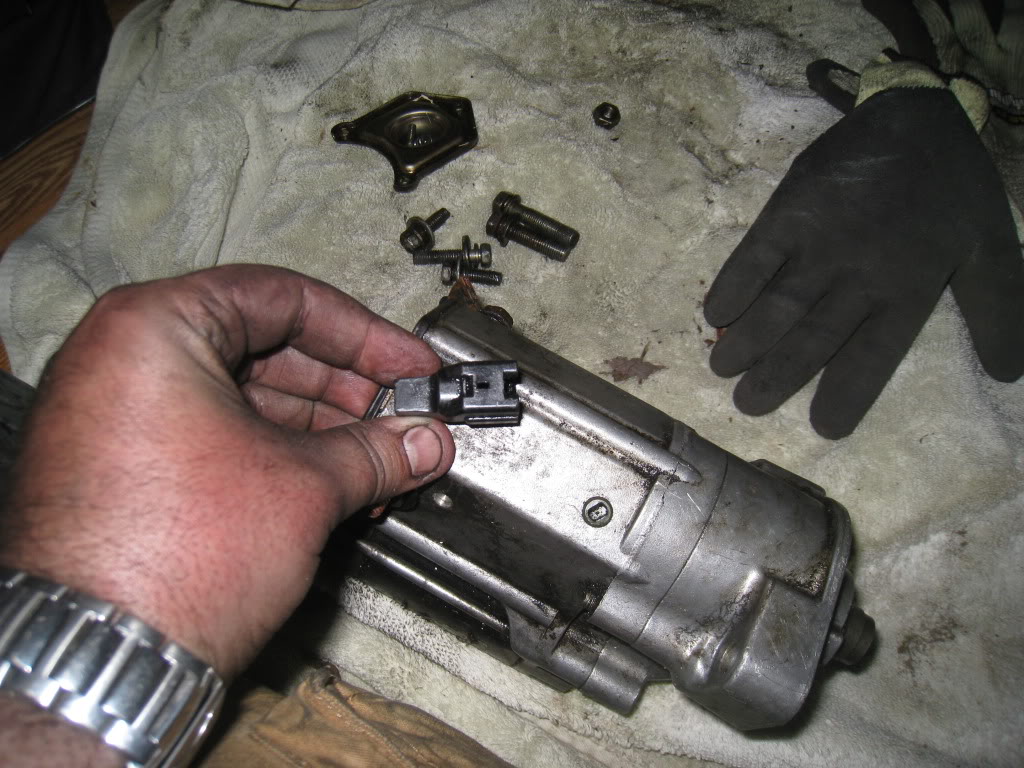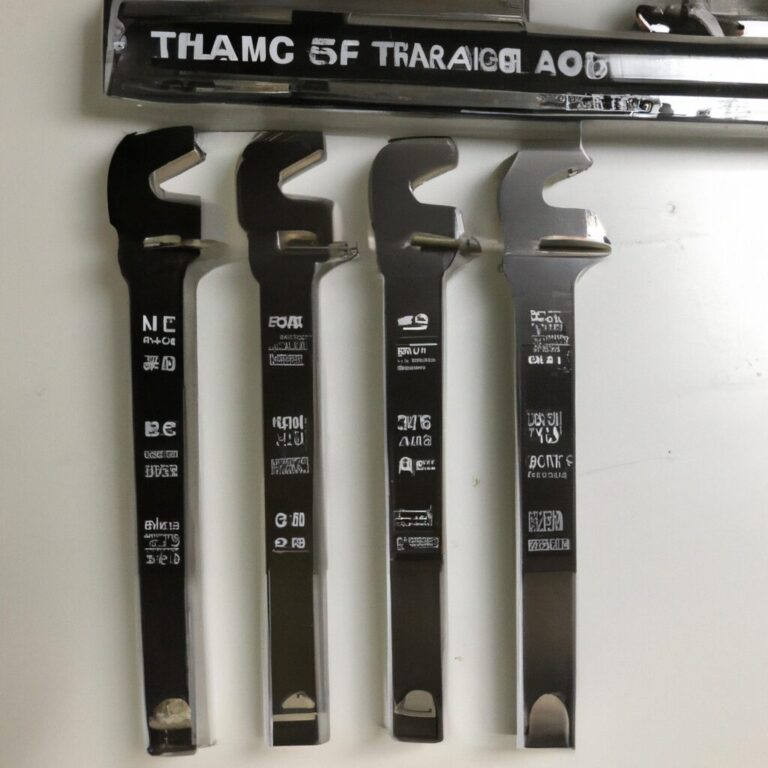How to Fix a Broken Starter
To fix a broken starter, disconnect the battery and replace the starter motor with a new one. Having car troubles due to a broken starter can be frustrating.
A malfunctioning starter can prevent your vehicle from starting and disrupt your daily routine. In this guide, we will provide you with step-by-step instructions on how to fix a broken starter in your car. By following these simple steps, you can replace the faulty starter and get your vehicle back on the road in no time.
Let’s dive into the details to help you troubleshoot and resolve your starter issue efficiently.

Credit: www.yotatech.com
Diagnosing The Problem
When your car won’t start, a faulty starter could be the culprit. Diagnosing the problem is the first step to getting your vehicle back on the road. By following these simple steps, you can quickly determine if the starter is the issue.
Checking Battery Connections
Start by checking the battery connections. Ensure they are clean and tight. Loose or corroded connections can prevent the starter from receiving enough power to function properly. Use a wrench to tighten any loose connections and a wire brush to clean off any corrosion.
Testing Voltage
Next, test the voltage of the battery. A weak or dead battery can mimic the symptoms of a faulty starter. Use a multimeter to measure the voltage of the battery. A healthy battery should read around 12.6 volts. If the voltage is significantly lower, the battery may need to be charged or replaced.
Listening For Clicking Sounds
Listen for clicking sounds when you turn the key in the ignition. If you hear a rapid clicking noise, it could be an indication of a faulty starter. This repetitive clicking is often caused by the starter solenoid not receiving enough power to engage the starter motor. In this case, the starter may need to be replaced.
Removing The Starter
To fix a broken starter, follow these steps to remove it from your vehicle. By carefully following the instructions, you can successfully replace the starter and get your car running smoothly again.
Disconnecting The Battery
To ensure safety, disconnect the battery by removing the negative terminal first.
Locating The Starter
Underneath the vehicle, find the starter which is usually near the engine.
Removing Electrical Connections
Unplug the electrical wires, noting down their positions for reconnection later.
Removing Mounting Bolts
Loosen and remove the mounting bolts securing the starter in place.
Repairing The Starter
When fixing a broken starter, first disconnect the battery, then locate and remove the starter from the engine. After disassembling and inspecting the starter, replace any worn-out parts. Reinstall the starter, reconnect the battery, and ensure it operates smoothly. Regular maintenance is essential to prevent starter issues.
Cleaning And Lubricating
Start by cleaning the starter motor to remove dirt and debris.
- Clean the motor casing with a soft brush and compressed air.
- Apply electrical parts cleaner to remove grime from contacts.
- Lubricate moving parts with a suitable lubricant to ensure smooth operation.
Replacing Faulty Parts
Inspect the starter for any damaged components that may need replacement.
- Check the solenoid for signs of wear or corrosion.
- Test the starter relay to ensure proper functioning.
- Replace any faulty parts with high-quality replacements.
Credit: www.hotrodders.com
Installing The Starter
When it comes to installing a starter, it is important to follow a systematic approach to ensure a successful repair. The process involves attaching mounting bolts, connecting electrical connections, and reconnecting the battery. Let’s take a closer look at each step.
Attaching Mounting Bolts
Ensure the mounting surfaces are clean and free from debris or corrosion. Align the starter with the mounting bolts and secure it in place. Tighten the bolts to the manufacturer’s specifications to prevent any issues in the future.
Connecting Electrical Connections
Inspect the electrical connections for any signs of damage or wear. Connect the wiring harness to the starter, ensuring a snug fit to prevent any loose connections. Double-check the connections to ensure they are secure and properly seated.
Reconnecting The Battery
Prior to reconnecting the battery, review the owner’s manual for specific safety instructions and precautions. Reattach the negative or ground cable followed by the positive cable. Be mindful of the correct order to prevent any electrical hazards.
Testing The Starter
When your car’s starter fails, it can leave you stranded and frustrated. However, before rushing to replace the entire starter, it’s essential to test it first. Testing the starter will help you determine whether the issue lies with the starter itself or elsewhere in the ignition system. In this section, we will cover the different methods to test a broken starter.
Testing Voltage
The first step in testing your starter is to check the voltage it receives. You will need a multimeter for this task. Ensure your vehicle’s battery is fully charged before proceeding. Start by disconnecting the positive terminal of the battery, followed by the starter’s wiring harness. Next, set your multimeter to the DC voltage setting. Connect the red lead to the positive terminal of the battery and the black lead to the starter’s main terminal. Make sure you have a good connection, then crank the engine. A healthy starter should show a voltage reading between 10.5 and 12.6 volts. Any reading below this range indicates a problem with the starter’s motor or solenoid.
Listening For Proper Operation
Another way to test a broken starter is by listening for proper operation. This method is suitable for vehicles that have no power or a dead battery. Begin by locating the starter motor, which is usually mounted on the engine’s side. Have someone turn the ignition key while you carefully listen for any noise coming from the starter. A series of rapid clicking sounds indicates a weak battery or poor electrical connections. On the other hand, a single click followed by silence suggests a faulty solenoid. If you hear a grinding noise, this indicates a worn-out starter drive gear and likely requires replacement.
By performing these tests, you can quickly identify whether your starter is the culprit behind your car’s starting issues. Remember, it’s always essential to consult your vehicle’s manual for specific instructions and safety precautions before conducting any diagnostic testing or repairs.

Credit: m.youtube.com
Frequently Asked Questions Of How To Fix A Broken Starter
Can Starter Be Repaired?
Yes, starters can be repaired by a professional mechanic for optimal performance and longevity.
How Do You Start A Car With A Broken Starter?
To start a car with a broken starter, push-start it manually by turning the ignition key while in neutral and having someone push the car.
Can You Jump Start A Car With A Bad Starter?
Yes, it is possible to jump start a car with a bad starter. However, it’s only a temporary solution. Once the car is running, the starter motor is not in use. Make sure to get the starter fixed as soon as possible for long-term reliability.
Can You Bypass A Broken Starter?
No, you cannot bypass a broken starter. When the starter is broken, it needs to be fixed or replaced for the vehicle to start.
Faq 1: How Do You Know If Your Starter Is Broken?
If your car makes a clicking noise when you turn the key, or if it cranks but doesn’t start, it’s likely a broken starter.
Faq 2: Can You Jumpstart A Car With A Bad Starter?
No, jumpstarting won’t fix a bad starter. It might help if the battery is low, but the starter still needs to be repaired or replaced.
Faq 3: What Causes A Starter To Go Bad?
Starter failure can be caused by worn-out brushes, a faulty solenoid, or a worn-out armature. Wear and tear over time can also contribute to starter failure.
Conclusion
Fixing a broken starter can be a straightforward process with the right tools and knowledge. By following the steps outlined in this guide, you can save time and money by avoiding a visit to the mechanic. With maintenance and occasional checks, you can ensure that your starter functions smoothly and reliably.

